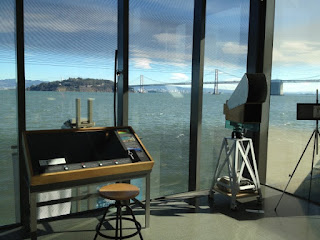 |
| X Marks the Spot |
The writer of any sort who tries to follow the alphabet sequence for first letter inspiration will inevitably encounter X and be tempted, as all the others, to do something with xylophone or xenophobic. The late classic food writer M.F.K. Fisher, who started this whole concept years ago, tried her hand with Xanthippe, Socrates's wife, who was, as Fisher makes her out, a shrew and bad for dinner table digestion (she had to find a food angle somehow). I like the simple geographical approach, "X marks the spot," (for favorite place to go in the area) because it easily follows the backbone of the argument made that La Crosse is in its greatest essence influenced by its natural resources and its native forms of labor. There are doubtless as many favorite "X marks the spots" as there are good citizens of the city. One woman's spot might be the flower garden in the backyard; another man's might be his tree stand on his neighbor's land which happens to hold a bluff side and ridge line; another might be the river, Lake Onalaska, Hixon Trails, the HPT's, surrounding small towns, etc., etc. Unlike other small towns not driftless, La Crosse is an endless array of green, rock, contours, water. For my own 'X,' – among many others – I would pick a place where history meets nature and they merge, sometimes literally, to
reveal a showcase variety of bluff, swamp and old prairie. The segment of the La Crosse River State Trail, starting at Cty. B (old Valley View Fitness and Racquet Club), then extending towards West Salem is a throwback landscape to a time when this entire coulee area was prairie and Mississippi / La Crosse River backwater swamplands. This particular stretch, roughly from Cty. B to Veteran's Memorial Campground, is its own designated eco-region, featuring "stretches of dry-mesic to dry prairie...flora is diverse with big and little blue-stem, Indian grass, and switch grass dominating." We
took our bikes to this stretch again last weekend with only a little over an hour to burn. Very few people, ironically, end up on this route "into the swamp," so the vast and mostly pristine marsh, teeming with the din of crickets and screech of red-winged blackbirds, is virtually all to yourself as you ride over the old rail road right-of-way bridges and under the occasional shade of an oak. Tall marsh turns immediately to lush farm field as you near West Salem. In five minutes, the Golf Course, hwy. 16, and the shopping zone fade to nothing more than vague memory.





















































